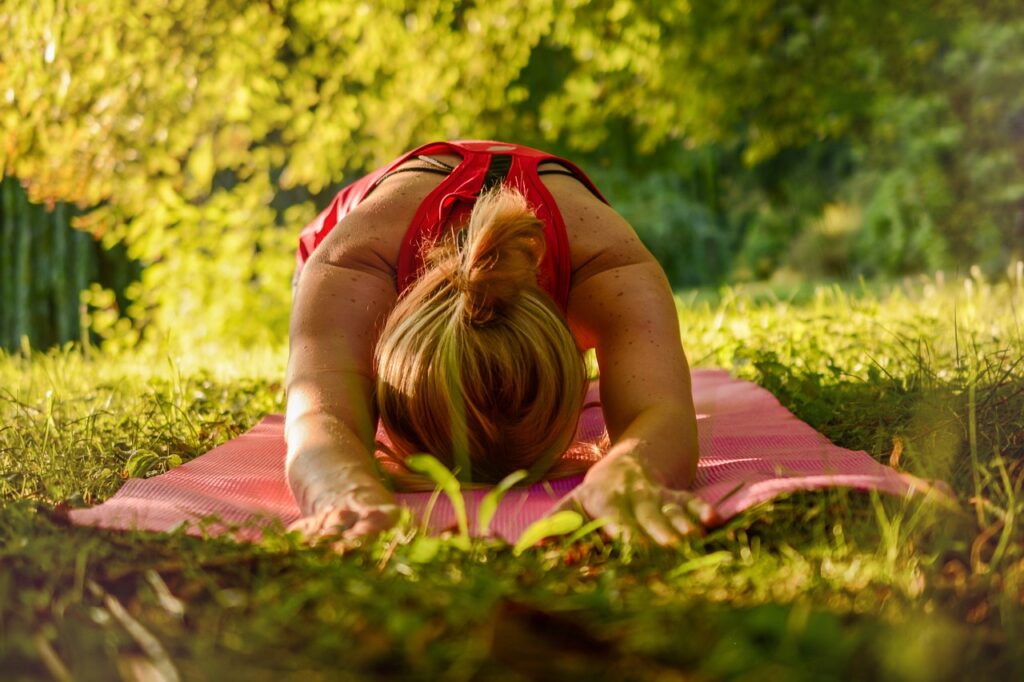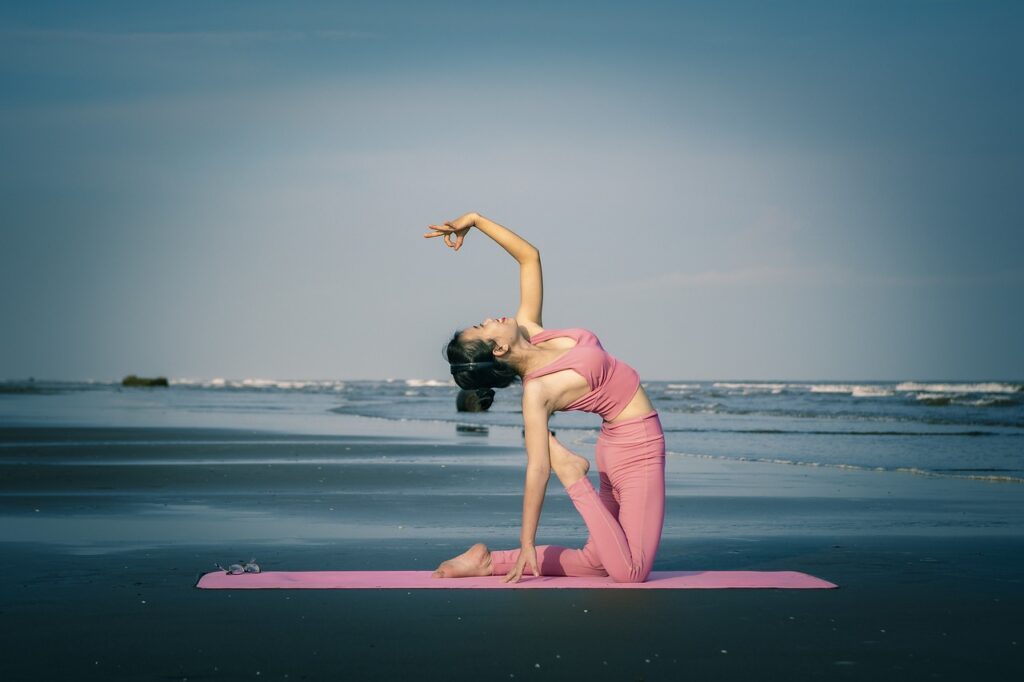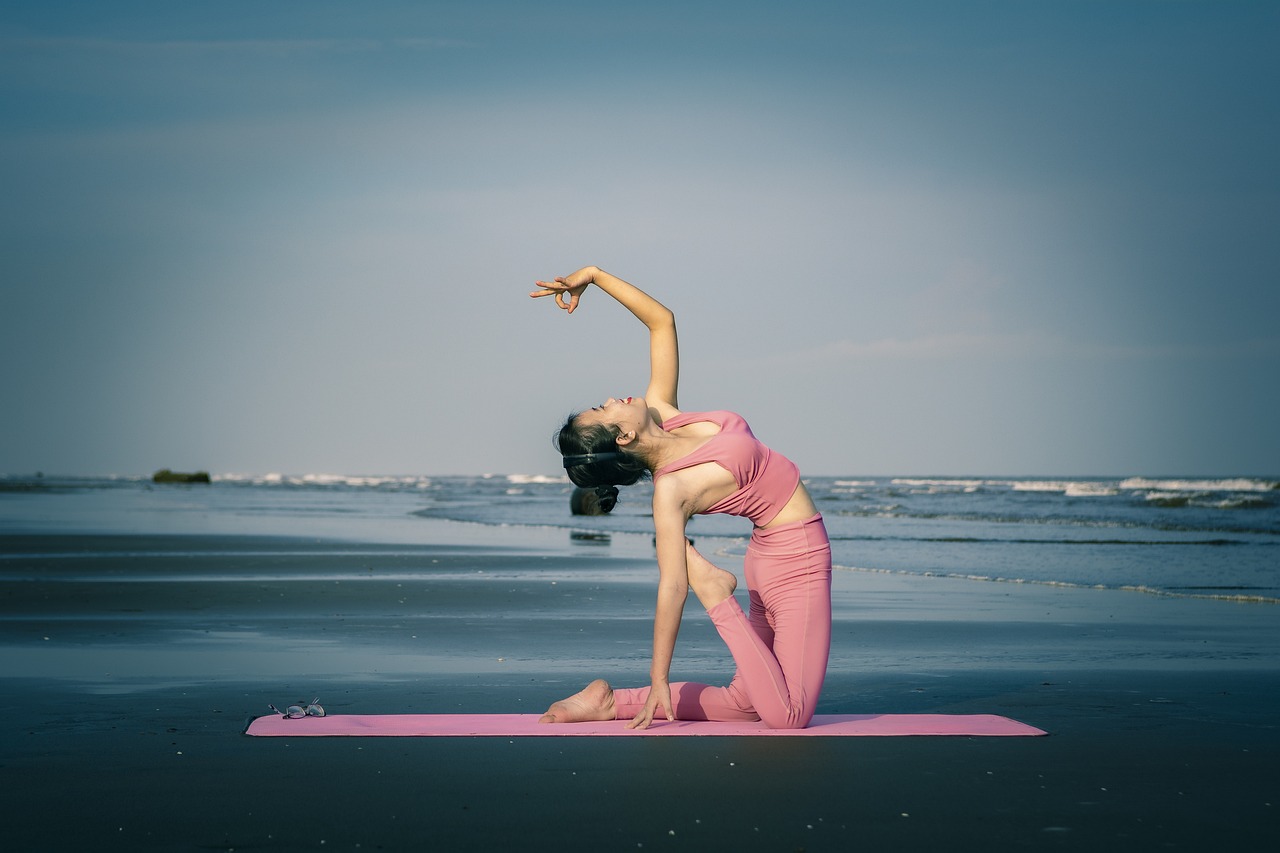In the world of yoga, the breath is regarded as a vital component of the practice. But have you ever wondered how the rhythm of breath actually influences your physical yoga practice? The relationship between breath and movement is an intricate one, and understanding it can deepen your understanding and experience of yoga. In this article, we will explore the profound impact the rhythm of breath has on your body, mind, and overall yoga practice. So, prepare to embark on a journey of self-discovery and unlock the power of the breath in your yoga journey.

I. Importance of Breath in Yoga Practice
A. Connection between Breath and Movement
In yoga, the breath is considered the bridge that connects the mind, body, and spirit. It is the life force that flows through us, providing energy and vitality. When practicing yoga, the breath acts as a guide, synchronizing with the movement of the body. Each inhalation and exhalation becomes an essential component of the practice, allowing for a deeper and more mindful experience.
B. Role of Breath in Energy Flow
Breath is not only vital for sustaining life but also for facilitating the flow of energy within the body. According to yogic philosophy, the body contains energy centers called “chakras,” and the breath is responsible for activating and balancing these energy centers. By practicing specific breathing techniques during yoga, we can stimulate, revitalize, and harmonize these energy centers, promoting overall well-being and vitality.
C. Breath as a Guide for Alignment
Proper alignment is crucial in yoga to ensure a safe and effective practice. The breath serves as a reliable guide for achieving body alignment in various yoga postures, or “asanas.” With each inhale and exhale, we can consciously direct our breath to specific areas of the body, bringing awareness and attention to the alignment of our joints, muscles, and spine. This alignment not only enhances the physical benefits of yoga but also prevents injuries and promotes body awareness.
II. Understanding the Rhythm of Breath
A. Natural Breathing Patterns
Before exploring different breathing techniques, it is essential to understand our natural breathing patterns. Typically, when we are not consciously controlling our breath, it tends to be shallow and irregular. Observe your breath in its natural state, without any effort to change it. Notice the rise and fall of the abdomen and the sensation of the breath moving in and out of the nostrils. By becoming aware of our natural breathing patterns, we can then explore and practice various techniques to enhance our breath and deepen our yoga practice.
B. Exploring Different Breathing Techniques
Yoga offers a rich variety of breathing techniques, known as “pranayama,” which can be incorporated into our practice to deepen our connection to the breath. Some common pranayama techniques include deep belly breathing, alternate nostril breathing, and breath retention. Each technique has its unique benefits and effects on the mind, body, and energy flow. By experimenting with different pranayama techniques, we can discover which ones resonate with us and support our yoga practice.
III. Enhancing Physical Yoga Practice with Breath
A. Syncing Breath with Asanas
One of the most fundamental ways to enhance the physical aspect of yoga is by synchronizing our breath with the asanas. As we move through each posture, we match our inhalations and exhalations to the rhythm of the movement. For example, during a forward fold, we may inhale as we lengthen the spine and exhale as we fold forward. This synchronization creates a flow-like quality to the practice, allowing for a smooth and controlled movement, while simultaneously deepening our awareness of the breath.
B. Using Breath to Increase Flexibility and Strength
The breath plays a significant role in increasing flexibility and strength during yoga practice. By consciously directing the breath into the areas of the body that require stretching or engagement, we can enhance the benefits of each asana. Inhalations can be used to create space and release tension, while exhalations can be used to deepen the stretch or engagement. The breath acts as a powerful tool, allowing us to explore our limits and gradually expand our range of motion and strength.
C. Applying Breath to Maintain Balance
Achieving and maintaining balance is essential in many yoga postures, and the breath can greatly assist in this endeavor. By focusing on the breath and finding a steady rhythm, we can anchor ourselves and cultivate a sense of inner balance. In balancing postures such as Tree Pose or Warrior III, the breath provides stability and focus, allowing us to find a deeper connection to the present moment and maintain a sense of equilibrium within the body and mind.
IV. Benefits of Conscious Breathing in Yoga
A. Calming the Mind and Relieving Stress
Conscious breathing in yoga has a profound effect on the mind, helping to calm an overactive mind and alleviate stress. By focusing on the breath and bringing our attention to the present moment, we can shift our awareness away from intrusive thoughts and external stressors. Deep, slow breaths activate the parasympathetic nervous system, triggering a relaxation response that counters the effects of the stress-induced fight-or-flight response. As a result, we experience a state of calm and tranquility, allowing us to fully immerse ourselves in the practice.
B. Boosting Energy and Vitality
Conscious breathing in yoga also has the potential to boost energy and vitality. With each inhale, we introduce fresh oxygen into our bloodstream, nourishing the cells and organs. The deep, conscious breaths help to oxygenate the body, increasing energy levels and promoting a sense of vitality. Additionally, specific breathing techniques, such as Kapalabhati (skull shining breath), can invigorate the body and awaken dormant energy, leaving us feeling energized and rejuvenated.
C. Deepening Body-Mind Connection
By practicing conscious breathing in yoga, we cultivate a deeper connection between the body and mind. The breath becomes a bridge that allows us to observe and experience the sensations and movements within our bodies. This heightened body-mind connection enhances our overall experience of yoga, increasing our body awareness, and facilitating a greater understanding of the mind-body connection. As we deepen this connection, we can tap into our body’s innate wisdom and respond to its needs with compassion and mindfulness.

V. Practicing Breath Awareness
A. Techniques for Cultivating Breath Awareness
Practicing breath awareness involves bringing our attention to the breath and observing its natural rhythm. One simple technique is to sit in a comfortable position, close your eyes, and focus your attention on the sensation of the breath entering and leaving the nostrils. Notice the temperature, texture, and flow of the breath without attempting to control or modify it. Another technique involves counting the length of the inhalations and exhalations, aiming to make them equal in duration. These techniques cultivate a deep sense of presence and mindfulness, enhancing the benefits of the yoga practice.
B. Incorporating Breath Awareness into Daily Life
Breath awareness is not limited to the boundaries of a yoga mat but can be incorporated into our daily lives. By bringing conscious attention to the breath during everyday activities such as walking, working, or eating, we can cultivate a greater sense of mindfulness and presence. The breath becomes an anchor that grounds us in the present moment, allowing us to navigate through life’s challenges with clarity, calmness, and a deeper appreciation of the present moment.
In conclusion, the breath is an integral part of yoga practice, serving as a guide, enhancing physical performance, and promoting overall well-being. By understanding and harnessing the power of the breath, we can deepen our yoga practice both on and off the mat. So, take a deep breath, become attuned to the rhythm of your breath, and embrace the transformative journey that is yoga.

